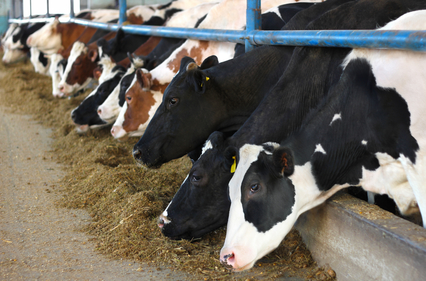Most dairy farm-produced nitrogen ends up elsewhere: research
Robin Pascoe
Most of the nitrogen-based pollution emitted by Dutch dairy farms ends up in the higher layers of the atmosphere and will impact on other areas rather than the farm surroundings, according to researchers at the University of Amsterdam.
The three-year project, carried out on behalf of the dairy industry research foundation Mesdag Zuivelfonds, confirmed earlier research that just 9% of the emitted nitrogen settles within a radius of 500 metres of the farm itself.
“Nitrogen is also deposited outside 500 meter radius, but at this distance, an individual farm can no longer be identified as the most important source,” the researchers said. Most nitrogen deposits, the researchers said, come from the so-called ‘nitrogen blanket ’ which covers the country and originates from both farming and industry.
The research focused on two dairy farms, one in a more urbanized area with lots of traffic and one in a more isolated part of the countryside. The team measured the nitrogen uptake in nitrogen hungry plants placed around the farms to assess how much came from local sources.
A key part of the Dutch strategy to reduce nitrogen-based pollution is to buy out farms that produce a lot of nitrogen and which are located close to vulnerable nature reserves. So far some 500 farmers have come forward.
The new research has been seized on by the farming lobby, including political party BBB, as proof that the government strategy is wrong and that there is no point in buying out peak polluters.
“The peak polluter plan can go,” BBB leader Caroline van der Plas said in a social media reaction. The money saved, the party said in a statement, can be better used elsewhere.
However, a spokesman for the agriculture ministry told the Telegraaf that even though most of the ammonia emitted by a given farm ends up elsewhere, the government’s approach is still beneficial because it “dents the nitrogen blanket” in general.
Mesdag Zuivelfonds commissioned the research because of concerns that methods of calculating nitrogen deposits used by the RIVM in 2020 were not accurate. It said the findings showed the composition of animal feed and dealing with manure “remain key factors in reducing nitrogen emissions and reducing the nitrogen blanket.”
“The current strategy focusing on peak polluters will not be effective because it will not lead to a measurable difference in the nitrogen pollution in nature reserves, apart from when barns fewer than 300 metres from a reserve.”
Lead researcher Albert Tietema from the UvA’s IBED institute did not respond to a Dutch News request for comment.
Thank you for donating to DutchNews.nl.
We could not provide the Dutch News service, and keep it free of charge, without the generous support of our readers. Your donations allow us to report on issues you tell us matter, and provide you with a summary of the most important Dutch news each day.
Make a donation